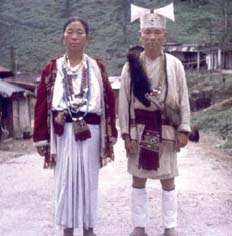/topics/biodiversity
Biodiversity
Tearing through the water landscape - Evaluating the environmental and social consequences of POSCO project in Odisha - A report by ESG
Posted on 08 Jun, 2011 03:34 PMBased on evidence from this inquiry, the study presents a critical analysis of the environmental and social impact information of POSCO's steel-power-port components to expose the fact that regulatory agencies have inadequate information on the short term and long term impacts of the project on the basis of the information that the company supplied to them. It also provides historical evidence
Volunteering at the Vembanad fish count 2011 - An Arghyam field report
Posted on 04 Jun, 2011 12:00 AM
Guest post by Priya Desai
Background
This was organised by the Ashoka Trust for Research in Ecology and the Environment (ATREE). Held on May 26th 2011, we were joined by around 150 to 200 student volunteers from various higher educational institutions in Kerala, such as the Kerala University of Fisheries and Ocean Studies, St. Albert's College in Ernakulam, School of Applied Life Sciences in Chuttippara and the School of Environmental Sciences, Mahatma Gandhi University.
International training on Geo-informatics and its application on Biodiversity Conservation –Aaranyak – Apply by 1st August, 2011
Posted on 24 May, 2011 12:23 PMAaranyak is a registered society working in the field of biodiversity conservation in North East India since 1989. Its strength lies in applied research in biological and social field and its thrust area of work is the North Eastern India and Eastern Himalayas.
Dakshin Foundation is looking for Programme Officer - Biodiversity (Monitoring and and Education), at Bangalore
Posted on 11 May, 2011 02:14 PM Dakshin Foundation is a non-profit, non-governmental organisation based at Bangalore, with a mission to inform and advocate conservation and natural resource management, while promoting and supporting sustainable livelihoods, social development and environmental justice.
Dakshin Foundation is a non-profit, non-governmental organisation based at Bangalore, with a mission to inform and advocate conservation and natural resource management, while promoting and supporting sustainable livelihoods, social development and environmental justice.
The Coastal and Marine Programme (CMP) at Dakshin works towards supporting coastal networks of community organisations, fishworker unions and associations and civil society groups interested in conservation and development issues in coastal India. The broad goals of CMP are natural resource management and biodiversity conservation involving communities.
Call for entries: Biodiversity film festival – CMS, at New Delhi – Apply by 10th May, 2011
Posted on 10 May, 2011 05:14 PMCMS Environment is a visionary initiative of CMS, a Delhi-based, nationally- functioning independent multidisciplinary organization, engaged for the past 20 years in research, policy advocacy, advisory services and programme evaluation in the domain of environment, social issues, public health, governance, development communications and transparency. CMS is also responsible for the internationally reputed CMS VATAVARAN: Environment and Wildlife Film Festival & Forum.
Sunderbans - A climate adaptation report by World Wildlife Fund India
Posted on 09 May, 2011 09:23 PM Beginning in 2005, WWF-India has conducted dozens of personal interviews to record how climate change impacts people's lives here and now. These perceptions demanded that s
Beginning in 2005, WWF-India has conducted dozens of personal interviews to record how climate change impacts people's lives here and now. These perceptions demanded that s
The Gharial - Our river guardian - A factsheet prepared by the Ministry of Environment and Forests
Posted on 28 Apr, 2011 04:35 PMIt was found in Pakistan, Bangladesh, Burma and Bhutan, but is now extinct in these countries. Today, it is seen in a few places in Nepal. In India the major population of Gharials is found in the Girwa and Chambal rivers. It faces many threats to its survival which include fishing, linking of rivers, large irrigation canals etc.
A structure for environment governance: A perspective on proposed National Environmental Protection Agency – A commentary in Economic and Political Weekly
Posted on 27 Apr, 2011 07:46 PMThis report on a round table held in November 2009 by a cross section of activists, policy analysts and academics deals with a move by the Ministry of Environment and Forests (MoEF) to restructure the environmental governance structure of the country through the proposed National Environmental Protection Agency.
Role of indigenous knowledge system in conservation of forest resources – A case study of the Aka tribes of Arunachal Pradesh – A paper in the Indian Journal of Traditional Knowledge
Posted on 23 Apr, 2011 09:01 PM Indigenous knowledge is the basis for local level decision making in agriculture, healthcare, food preparation, education, natural resource management, and a host of other activities in rural communities.
Indigenous knowledge is the basis for local level decision making in agriculture, healthcare, food preparation, education, natural resource management, and a host of other activities in rural communities.
Inviting endorsements on a submission to the WGEEP for declaring the rivers in the Western Ghats as Ecologically Sensitive Areas (ESAs)
Posted on 22 Apr, 2011 12:58 PMDear friends,
We are all aware of the immense ecological, cultural and social significance of rivers originating and flowing through the Western Ghats. This includes source regions of East flowing rivers like Krishna, Godavari and Cauvery and the source, riparian and estuarine region of all West flowing rivers.
We are lucky to still have some of the very few and very rare 'free flowing rivers' in the country. Most of the rivers in our country have been dammed and diverted. This has changed the ecological and physical characteristics of these rivers completely. Today, it is difficult for us to visualise the amazing range of ecological goods and services that an undammed, free flowing river can provide. Some such rivers in the Western Ghats are Shastri, Aghanashini, Gargai and Seetha Nadi.





